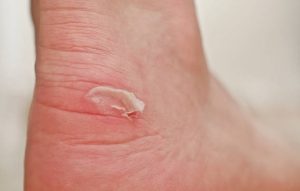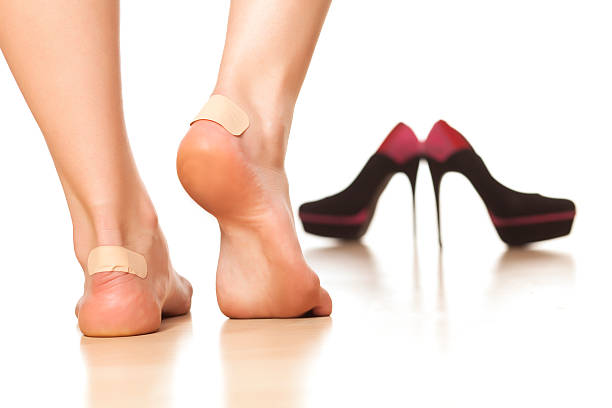Blisters are a common skin condition that can affect people of all ages and lifestyles. These small pockets of fluid, which form on the outermost layer of skin, can be caused by a variety of factors and can range in severity from mildly irritating to extremely painful.
What are blisters?
Blisters are small pockets of fluid that form on the skin’s surface, typically caused by friction, burns, or skin damage. They are usually filled with a clear fluid but can also contain blood or pus, depending on the underlying cause. Blisters can form anywhere on the body but are most commonly found on the feet, hands, and mouth.

Causes
They are typically caused by friction or rubbing against the skin, which can occur due to ill-fitting shoes, repetitive motion, or prolonged exposure to moisture. Other common causes of blisters include burns, insect bites, allergic reactions, and certain medical conditions like herpes simplex virus and chickenpox.
Symptoms of blisters
The symptoms of blisters vary depending on their cause and severity. Mild blisters may cause little to no discomfort, while more severe cases can be painful and interfere with daily activities. Symptoms of blisters include:
- Redness or swelling around the affected area
- Pain or tenderness when touched
- Itching or burning sensation
- Clear, yellow or bloody fluid-filled bumps on the skin
Treatment of blisters
The treatment for blisters depends on their cause and severity. In most cases, blisters will heal on their own without intervention. However, there are several steps you can take to help speed up the healing process and reduce discomfort:
- Leave the blister intact: Do not attempt to pop or drain a blister, as this can increase the risk of infection and slow down the healing process.
- Apply a bandage: Cover the blister with a sterile bandage to protect it from further irritation and to reduce the risk of infection.
- Apply cold compress: Apply a cold compress, such as a bag of ice wrapped in a towel, to the blister for 10-15 minutes at a time to help reduce inflammation and pain.
- Keep the blister dry: Avoid exposing the blister to moisture, as this can slow down the healing process and increase the risk of infection.
- Use over-the-counter creams: Apply an over-the-counter cream or ointment to the blister to help reduce pain and promote healing.
When to see a doctor
Most will heal on their own without complications. However, you should see a doctor if you experience any of the following:
- Signs of infection, such as redness, warmth, swelling, or pus
- A large or painful blister that interferes with daily activities
- Multiple blisters that appear suddenly without a clear cause
- Chronic blisters that recur frequently or do not heal
In summary, blisters are a common skin condition that can be caused by a variety of factors. While most blisters will heal on their own without intervention, it’s important to take steps to reduce discomfort and promote healing. If you experience any signs of infection or a severe blister, seek medical attention promptly to avoid complications.
If you have questions or require more information on this article please click here or drop a comment below this article.
To view our shop of herbal supplements click here .


Wow, amazing blog structure! How long have you ever been blogging for?
you make running a blog glance easy. The full look of
your website is magnificent, let alone the content material!
More than 5 years now, THANKS!
Great article, exactly what I wanted to find.
I don’t even know how I ended up here, but I thought this post was great.
I don’t know who you are but surely you’re definitely a famous blogger if you aren’t already 😉 Cheers!
Thanks so much for your review! Glad you enjoyed it too!